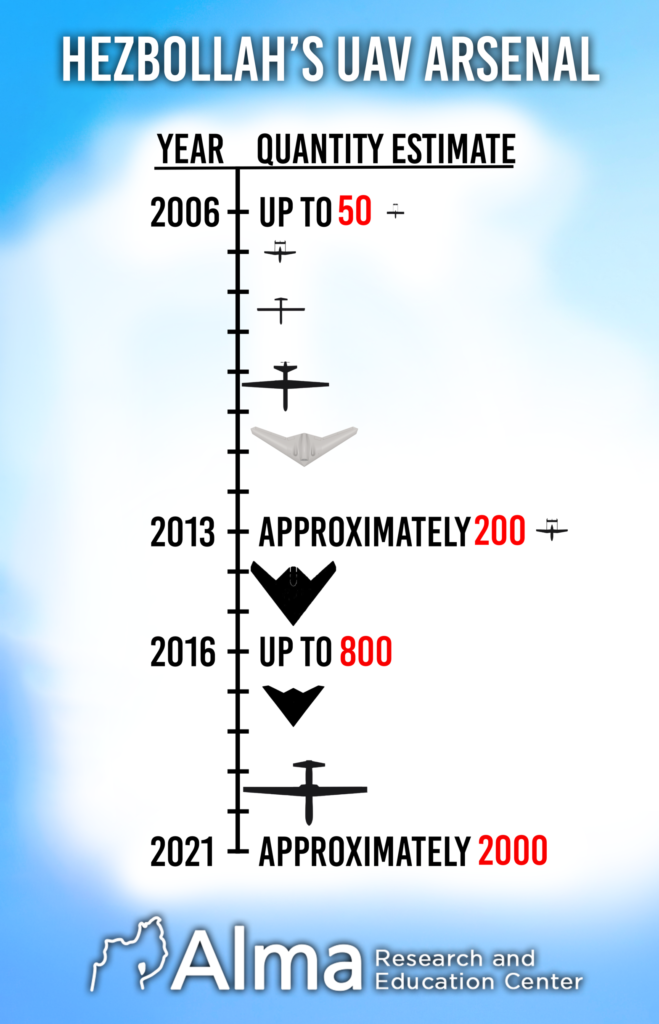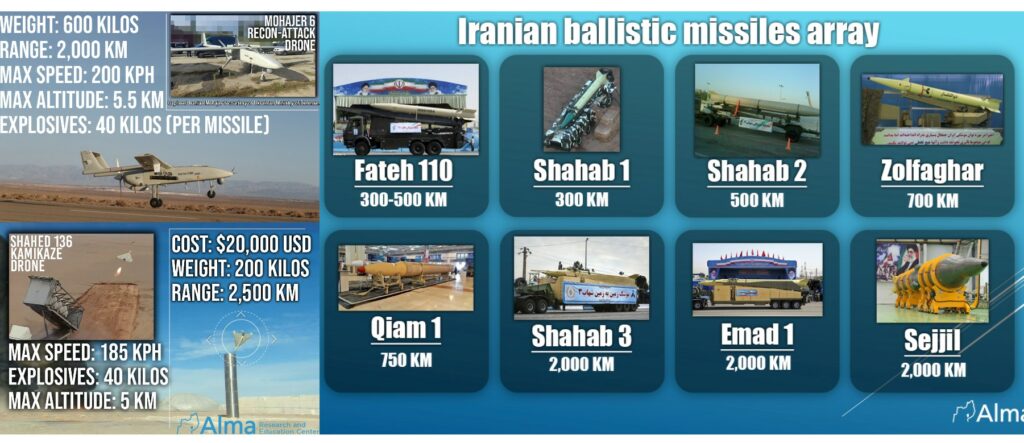By: Tal Beeri and Yaakov Lappin
In our opinion, the United States and Western European countries are underestimating the direct threat potential of Iranian weapons on their soil. The direct threat on the soil of the United States will probably come from Venezuela and the direct threat on the soil of the European countries will probably come from the North African region (Western Sahara for example) or the Russia-Belarus region. Even an “innocent” merchant ship sailing near the coasts in international shipping lanes can be used as a platform for launching UAVs. The time has come for NATO countries led by the United States to be actively involved on Iranian soil in disrupting the development and production processes of Iranian weapons. The war in Ukraine proves this well.
General:
When we published our special report in December 2021 regarding the Iranian UAV army, which includes thousands of UAVs from at least 9 UAV types and a total of 50 UAV models that can collect intelligence, attack, and carry cargo, our main goal was to present the existing threat from the Iranian UAV army in the Middle East.
In addition to the direct use of the “UAV Army” by the Iranians themselves, the threat manifests itself in the extent of the arsenal, the deployment and accessibility of the UAV army for use by Iran’s proxies in Lebanon (Hezbollah and Hamas), in Syria (Hezbollah and Shiite militias), in Iraq (Shiite militias), in Yemen (Houthis) and in the Gaza Strip (Hamas and Islamic Jihad). The capabilities of Iran’s UAV army in the Middle East pose a direct threat to Israel, the moderate Sunni states, and international forces operating in the Middle East.
The abovementioned report also emphasized that what goes on in the Middle East doesn’t remain in the Middle East. We specifically noted that the capabilities of the Iranian UAV army also endanger countries on the American continent (including the United States), Europe, and Africa.
We may have erred in our estimation regarding the timing of this threat. We never imagined that the dramatic and disturbing turnaround would happen so quickly. The threat from the Iranian UAV army became a reality outside the Middle East in September 2022, on European soil, in Ukraine, about nine months after the publication of our report in December 2021.
As early as the beginning of September 2022, initial reports announced that the Russians launched an Iranian Shahed 136 UAV against Ukrainian targets on European soil. Still, the widespread wave of attacks that took place on October 16 and 17 using a large number of attack UAVs caught the world’s attention and directed it toward the transfer of Iranian weapons to Russia.
Today, the Iranian UAV army is operating against Ukraine. In the future, it may act against other European countries, and even the United States may find itself defending Miami territory from the Iranian UAV army launched from Venezuela.
We’ll mention that Venezuela, located in the United States’ “backyard,” is considered a close ally of Iran, and symbolically, the Iranian leadership considers Venezuela part of the radical Shiite axis. The aerial distance between Venezuela and Florida is about 2,000 kilometers.. This range is relevant to the capabilities of some Iranian UAVs (such as the Shahad 136 and the Mahjar 6 operating in Ukraine).
We know that Iran regularly transfers weapons to Venezuela and that Venezuela, in particular, and South America, in general, have become a base for the IRGC’s Quds Force. In the context of Iranian air capability from Venezuela, it is worth noting that Puerto Rico, whose inhabitants are American citizens, is only about 850 kilometers from Venezuela…
In our assessment, the development and production of Iranian weapons cannot be thwarted. However, these processes can be disrupted and impeded. Disruption can be achieved by attacks that will be carried out based on an accurate and ongoing intelligence picture leaning on two main axes, as we already recommended in the special report on the UAV army from December 2021 and in an article we published in October 2022: A dramatic and disturbing turnaround: Iran is emerging as a major supplier of precision firepower to Russia – and what can the US and Israel do against it?
The first axis is to inflict damage on production and storage sites. The intention is to carry out continuous attacks on the manufacture and storage sites of Iranian weapons on Iranian soil, emphasizing the UAV and missile industry. For example, there are at least 8 production sites and 7 storage sites for UAVs that were exposed in Iran. Presumably, additional production and storage sites have not yet been disclosed.
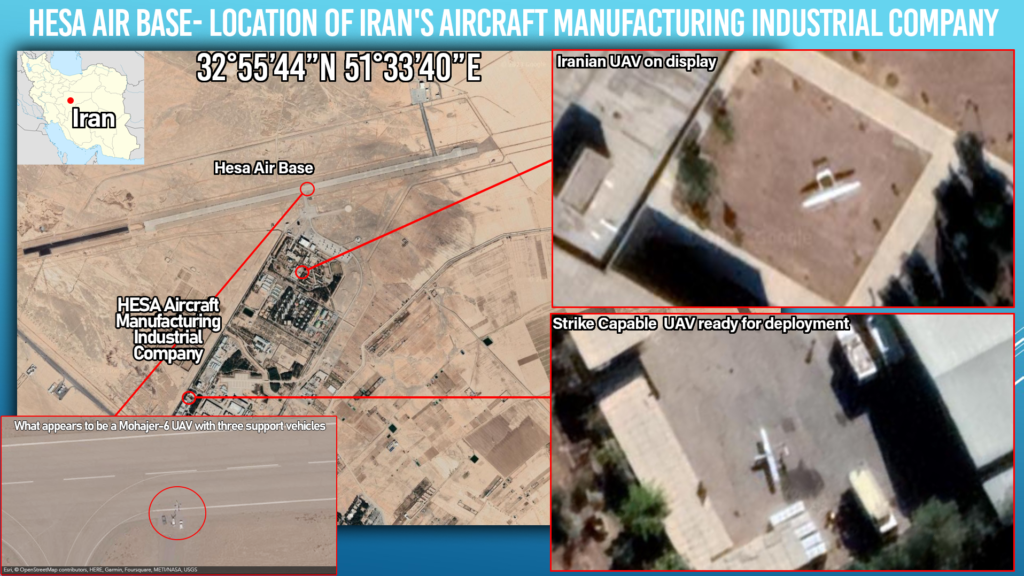
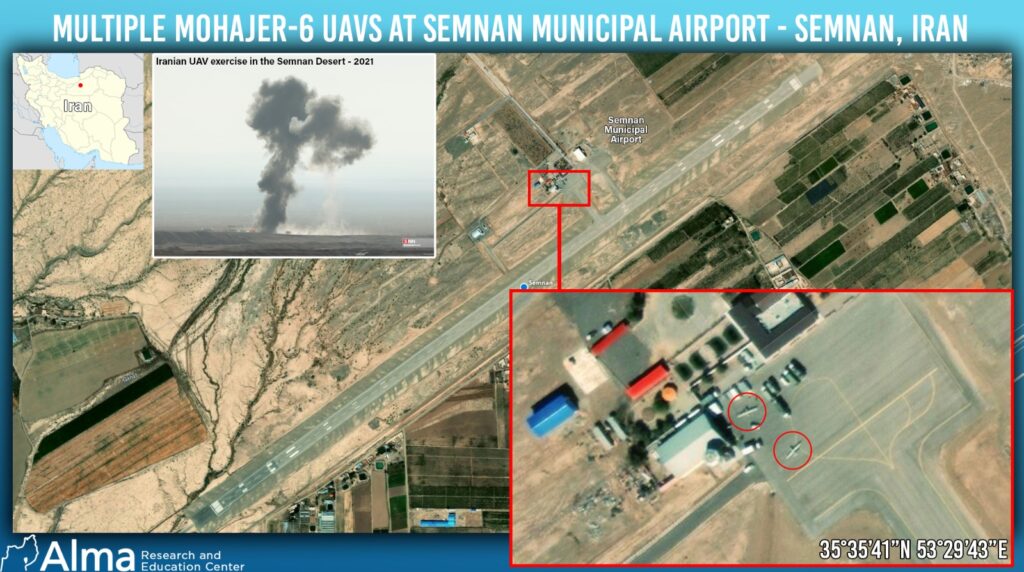
What transpired in Iran on the night between January 28 and January 29, 2023? Does our recommendation consistent with reality?
During the night, reports began emanating regarding explosions at several military and industrial sites throughout Iran and of intensive Iranian air activity in the country’s skies, which included aircraft maneuvers and the activation of air defense systems.
As of this writing, the Iranian Defense Ministry has confirmed that an “ammunition center” belonging to it in Isfahan has been attacked by suicide UAVs. The Iranians are trying as much as possible to minimize the amount of damage caused to them through information warfare.
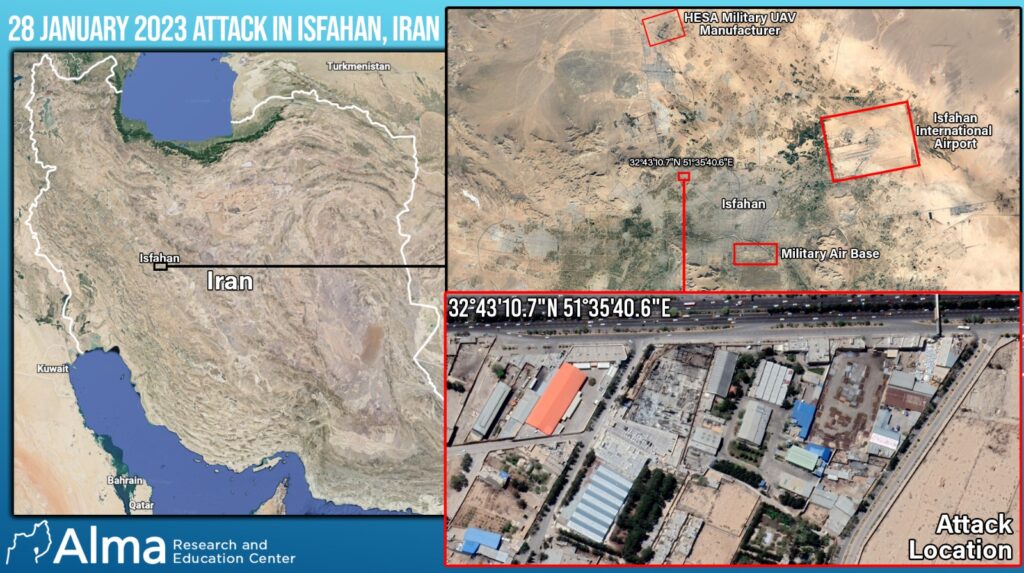
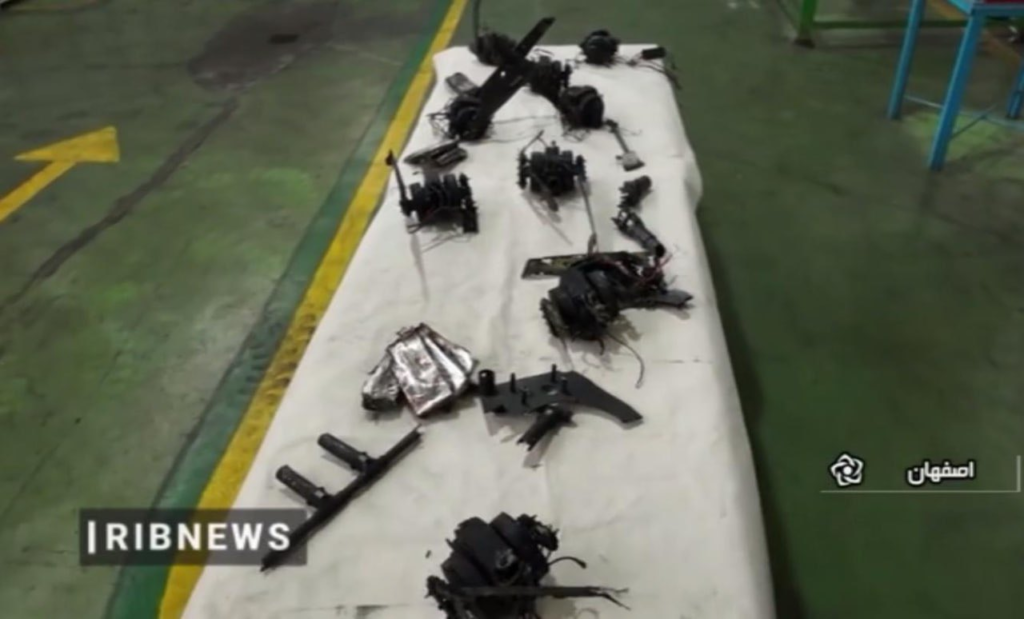
According to a report by Al-Arabiya / Hadath from January 29, based on American sources, this was a large-scale attack carried out by the US Air Force and the air force of another country, other than Israel, directed against an Iranian ballistic missile depot.
On the other hand, the Wall Street Journal and the New York Times published on January 29 that Israel was behind the attack.
All of the media channels mentioned above are well known as conduits for leaking information. There is no doubt that we are witnessing information warfare at its best.
The second axis is to target officials. The intention is to harm relevant officials in the Iranian arms industry and those responsible for the arms proliferation. In the context of the UAVs, these are officials in the IRGC’s air force associated with the Iranian UAV army, with an emphasis on the IRGC’s logistics manager, which is behind the transporting of the UAV army, and the Quds Force’s Unit 340 operatives responsible for assisting in the research and development of the Iranian proxy’s independent production capabilities. In our assessment, they also assist the Russians against Ukraine.

This goal would be best implemented by establishing a joint task force consisting of NATO and other relevant countries, which will act in a coordinated and joint manner against Iranian weapons throughout the Middle East and worldwide.
The strategic cooperation between Russia and Iran, with an emphasis on UAVs, began in June 2022, with the secret arrival of a Russian arms procurement delegation to Iran at the Shahid Karimi military base in Kashan to examine several UAV models.
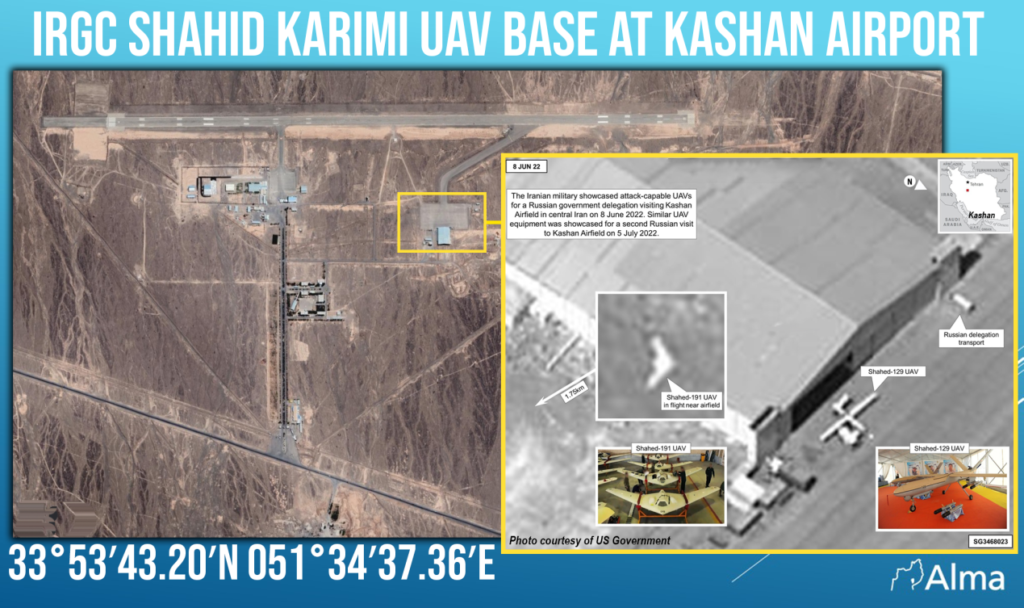
Russia and Iran’s cooperation continues to be expressed in Iran’s ongoing supply of various attack UAVs to Russia, which launches them towards civilian targets in Ukrainian cities, emphasizing critical energy infrastructures. On the other hand, Ukraine is developing the ability to intercept some of the UAVs, thereby exposing a possible weakness of these attack weapons, which, as noted above, directly threaten high-quality targets in Israel due to their existence in the weapons depots of Iran, Hezbollah, the Shiite militias in Syria and Iraq, and the Houthis in Yemen.
It is clear that the military cooperation between Russia and Iran will not stop at the supply of UAVs, and for some time now, there have been reports that Russia intends to purchase ballistic missiles from Iran as well. In our assessment, that day is not far off because Iran, ironically, will also provide the Russians with additional advanced conventional weapons systems, such as air defense systems.
According to a report in Newsweek, US administration officials estimate that the cooperation between Russia and Iran is expected to deepen even further soon. This is due to Russia’s hunger for more Iranian munitions, such as additional UAVs and missiles. This supply is an important component of Russia’s ability to continue its war against Ukraine and launch long-range firepower on the Ukrainian home front.
According to US assessments, Russia is facing a shortage of the armaments required for long-range attacks, and its appeal to Iran – and North Korea – to replenish stocks is actually an expression of Moscow’s desperateness.
What is the amount and type of Iranian UAVs supplied to Russia so far?
According to various reports, Iran supplied Russia with about 2,000 Shahed 136 suicide UAVs (nicknamed “Gran 2” by the Russians) and a smaller version of it, Shahed 131 (which is actually an outdated version of the Shahed 136). This supply includes an unknown number of Mohajer 6 UAVs for intelligence-gathering and attack missions using missiles launched from the UAV’s wing. In addition, dozens of the Shahad 129 type, attack, and intel-collecting UAVs were supplied. Estimates of the size of Iran’s commitment to supplying its Russian partner vary from report to report.
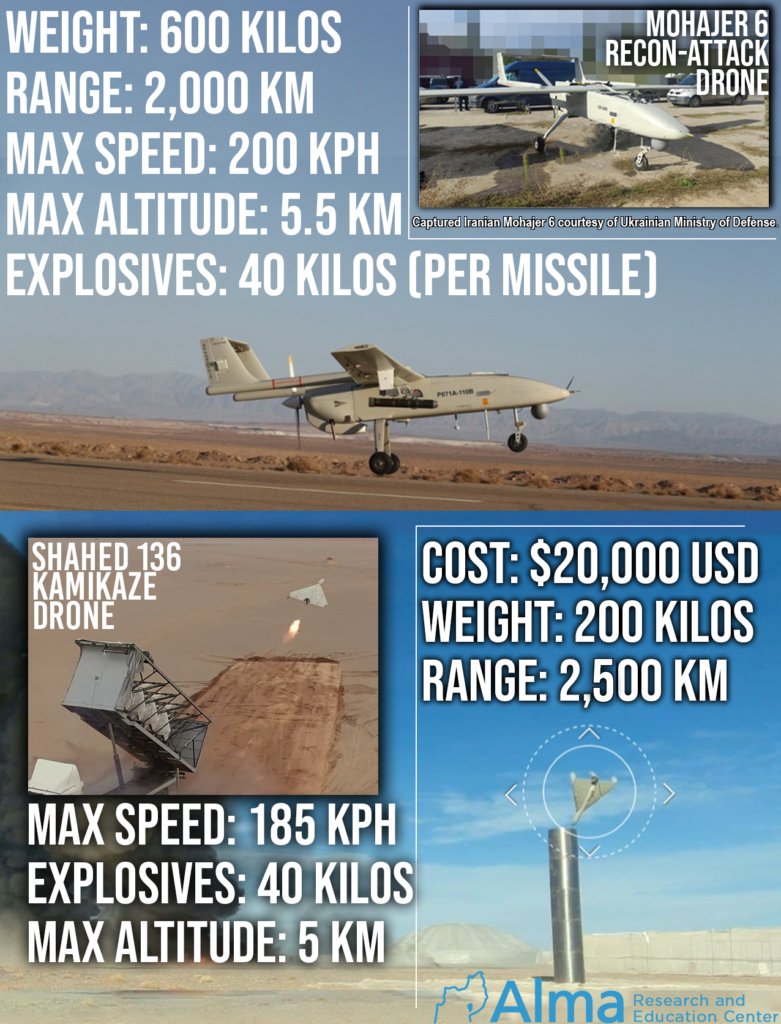

According to a report by Iran International, in December 2022, Iran supplied hundreds of Shahad 136 UAVs. Based on estimates by Ukrainian intelligence, Moscow ordered a total of 2400 UAVs of various types from Iran in October 2022.
An article by the Institute for National Security Studies in Israel (INSS) stated, based on American sources, that Iran supplied about 1,700 UAVs, some of them recently, to Russia. According to the Americans, a small delegation of Iranian military personnel arrived in Crimea in 2022 to instruct Russian military personnel on how to operate these UAVs.
The article estimated that “in the future, short- and medium-range missiles will probably also be supplied, as well as assistance in the construction of a UAV factory in Russia, the possibility of which was discussed by Moscow and Tehran. This move will significantly increase the inventory held by Russia, although its implementation will take time.”
As we noted, estimates of the magnitude of Iran’s commitment to supplying the Russian partner vary from report to report. A December 2022 report based on NATO officials estimates Iran has agreed to supply about 6,000 UAVs to Russia, most Shahed, and ballistic missiles.
The pace of Iran’s production and supply is not entirely clear. The Iranians will likely want to produce new UAVs for Russia and not consign large quantities of existing UAVs from the Revolutionary Guards stock. This is so as not to harm Iran’s operational readiness. There have also been reports of a Russian-Iranian agreement to build a production line for Iranian UAVs on Russian soil to meet the Russians’ large quantitative demands.
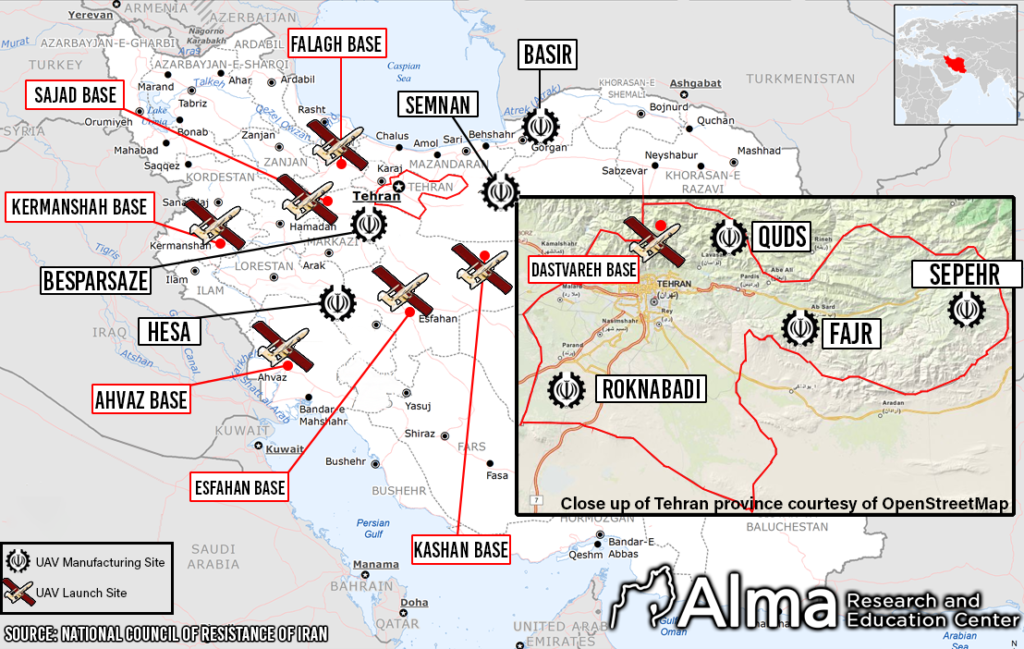
Iran’s UAV manufacturing industry is not affected by international sanctions. The main reason for the ineffectiveness of the sanctions is that many components used in this industry are civilian off-the-shelf components that are very easy to purchase on websites. For example, the cost of a Chinese DLE-111 engine that serves several UAVs costs $500 on the Ali Baba website.
The procurement is carried out, among other things, through procurement agents who live in Western countries. These agents purchase the various components from their place of residence, sending them to Iran. The parts are transported worldwide, among other ways, via Iranian diplomatic mail.
According to a CNN report, of the 52 components that the Ukrainians managed to remove from the Shahad 136 that were intercepted, 40 appear to have been manufactured by 13 American companies. The remaining 12 components were produced in Canada, Switzerland, Japan, Taiwan, and China. This information indicates Iran’s ability to assemble the attack UAVs from components that exist freely in the global civilian market.
How effective are the Ukrainian interceptions?
According to a report in the Wall Street Journal, Ukraine is improving its ability to intercept the Shahd UAVs and is using Western air defense systems to do so.
According to the Wall Street Journal, Ukraine can intercept an increasing percentage of the total number of attack waves of Iranian UAVs launched by the Russians. This includes 39 interceptions out of 39 UAVs launched on January 03, 2023, at Ukrainian targets. Meanwhile, in Kyiv, the capital of Ukraine, the population enjoys increasing power supply hours thanks to the more effective protection of Ukraine’s energy infrastructure.
It should be noted that with the start of Russian attacks with the support of Iranian weapons, according to Ukrainian government estimates, about 1.5 million homes in the country were cut off from the electricity grid, 40% of the electricity grid itself was damaged, and 30% of power plants were neutralized.
In December 2022, according to a report by Defense News, the British minister in charge of military forces (separate from the Minister of Defense) estimated that Iran had made a mistake in its decision to extensively supply its attack UAVs to Russia. This is due to the opportunity created to reveal the weapon’s true abilities with an emphasis on its weaknesses. This makes it possible to develop effective interception solutions against Iranian UAVs.
Ukrainian security officials announced in January 2023 that their various defense systems had managed to intercept most of the Iranian attack UAVs launched by Russia towards Kyiv, the capital, and against other Ukrainian cities at the end of December 2022 and the beginning of January 2023.
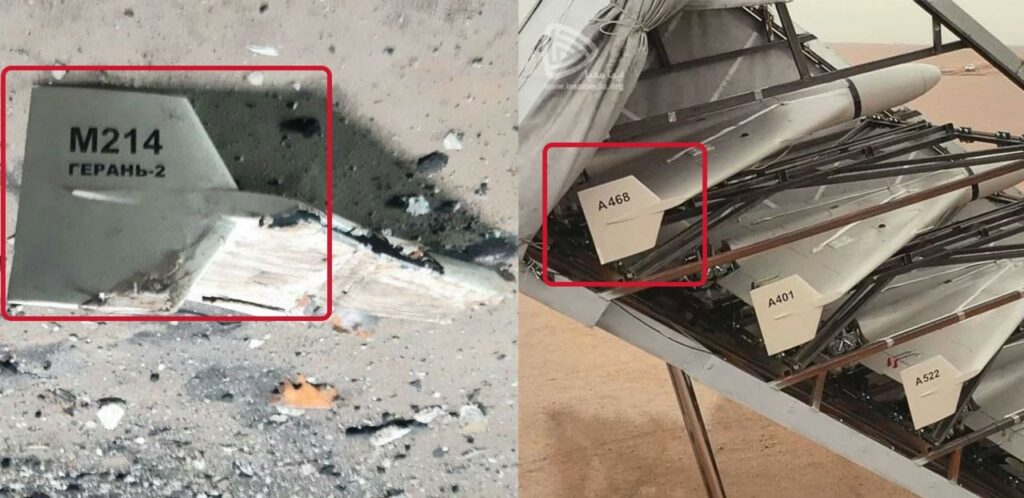
In late December 2022 and early January 2023, Russia launched wave after wave of combined attacks – cruise missiles and UAVs – against Ukrainian energy infrastructure. In early January 2023, Ukrainian President Volodymyr Zelensky said Kyiv was preparing for an ongoing attack by Iranian UAVs. He estimated that the UAVs are a key element in the Russian plan, leading to the erosion and fatigue of the Ukrainian home front.
During December 31, 2022, and January 1, 2023, Ukraine managed, according to the Ukrainian Air Force, to intercept 84 Iranian Shahad UAVs.
To carry out the interceptions, the Ukrainian army built mobile combat teams mounted on jeeps and other vehicles, on which anti-aircraft machine guns and searchlights were installed. It is not clear whether these teams also benefited from radar guidance to intercept the UAVs.
A Ukrainian report clarified that the Ukrainian army also uses the Norwegian-American air defense system, NASAM, to intercept the Shahed UAVs and that Ukrainian air defense teams have found the system to be highly effective in detecting and intercepting the threat. The system uses advanced radar to direct ground-to-air missiles at aerial targets.

“Our staff barely had time to re-arm the NASAMS system,” said a Ukrainian military official. “They fired almost like artillerymen. No one else likely has such experience in operating this air defense system,” the official said, asking the West to provide more such systems and interceptors.
Despite the successes in the interception, it cannot be said that the Iranian attack UAVs have ceased to pose a threat. Despite Ukraine’s developing ability to intercept such threats, it seems unlikely that Ukrainian air defense can intercept an entire swarm of UAVs.
For example, on April 24, 2021, Iran unveiled a “suicide” attacking UAV designed to operate in a band/swarm of up to 10 UAVs. This is a small UAV with a combat warhead weighing 5-15 kg. Its operational radius is 400 km. These attacking UAVs can be carried on top of other UAVs to bring them close to the target.

At the same time, Israel has a broad basis for learning from the Ukrainian interception efforts, as part of building Israel’s readiness for the same threat, mainly from the Lebanese arena, where, as of the end of 2021, Hezbollah harbors at least 2,000 UAVs of various types .
The biggest challenge facing Iran and Russia in this regard is probably Iran’s production capacity and ability to keep up with the Russian demand. A demand stemming from the growing dependence on Iranian firepower on a European battlefield.
Iranian weapons now threaten European countries and are no longer just a problem for Israel. NATO countries, led by the United States, should act offensively against Iran on Iranian soil, usually with a low profile, optimizing and expanding the scope of measures (sanctions) currently in place.
